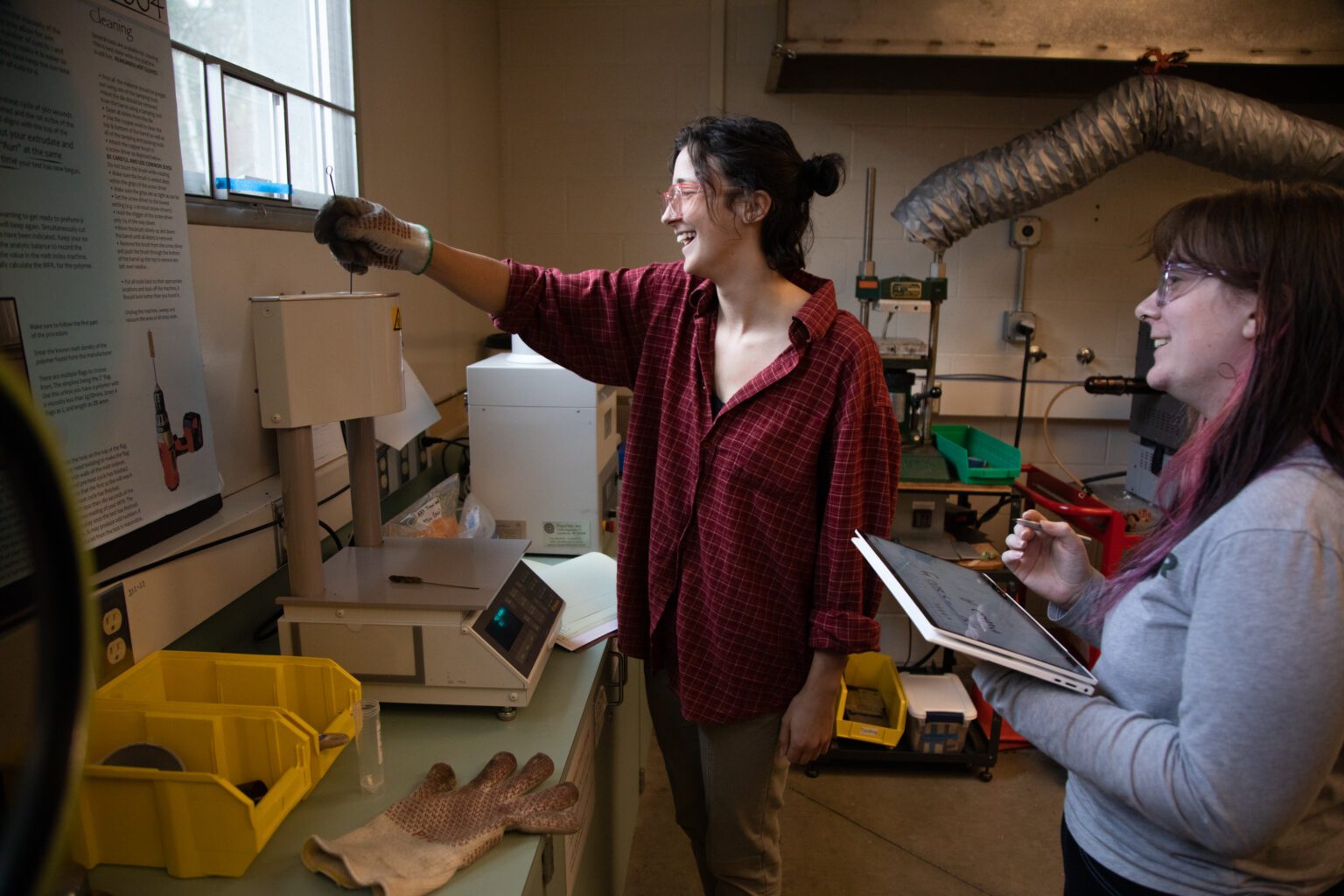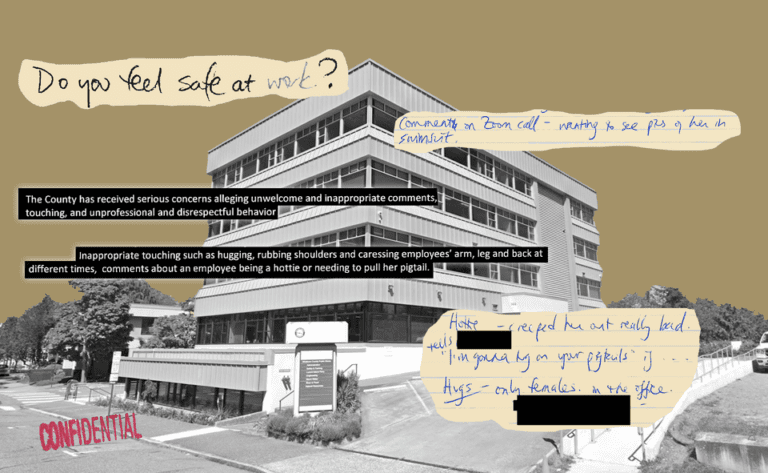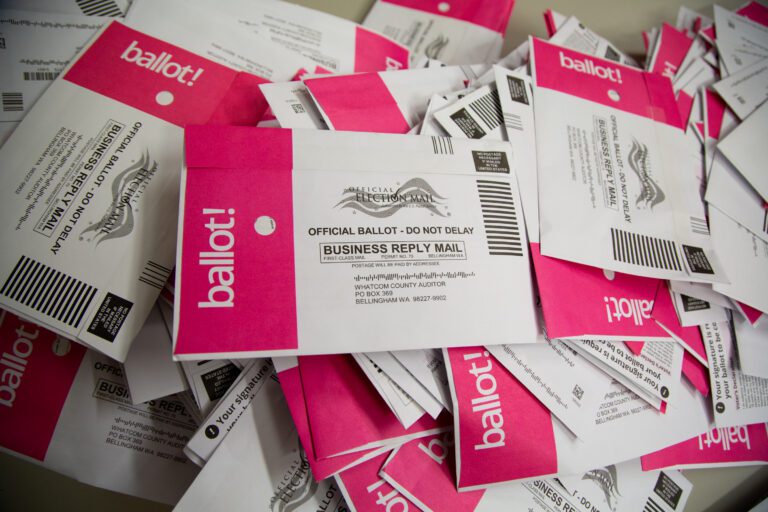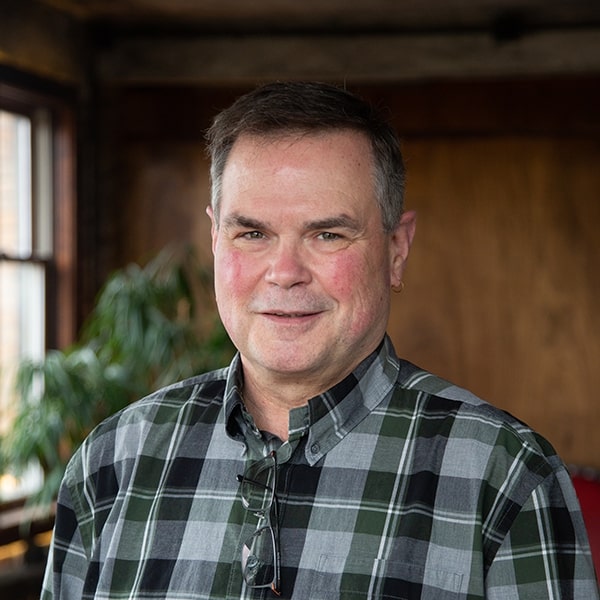Each year, hundreds of tons of plastics wash up along Alaska’s remote shorelines — from buoys to nets to plastic bottles. At Western Washington University, students are reimagining the future of those plastics.
In 2019, Western’s polymer materials engineering program partnered with the Ocean Plastics Recovery Project in an effort to collect and recycle ocean plastics. Over the past four summers, groups of students have engaged in intensive cleanups along the shores of Alaskan beaches, bringing materials back to Western’s labs for student research.
“Alaska is kind of shaped like this perfect catcher’s mitt, and the way the currents come out of the Pacific Ocean, they push debris that’s in the ocean up into the shorelines,” said John Misasi, an associate professor of polymer materials engineering at Western.
Over time, those plastics become degraded, creating microplastics that leach into the water.
Misasi said the majority of collected plastics end up in landfills, despite being reusable.
“What we’ve been working on with them over the last few years is figuring out, can you go through recycling processes to ensure that it gets used back into new products so it’s not going into the landfill?” he said.
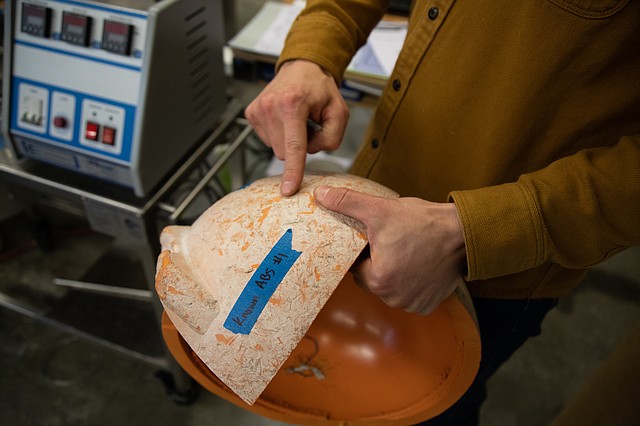 Western professor John Misasi holds an ocean buoy made from ABS plastics that students are working to recycle. (Hailey Hoffman/Cascadia Daily News)
Western professor John Misasi holds an ocean buoy made from ABS plastics that students are working to recycle. (Hailey Hoffman/Cascadia Daily News)
On the program’s weeklong summer trips, students live on a large vessel and learn from other scientists. Each day, they travel to the shore and spend four to six hours collecting plastics.
Many of the materials collected come from old fishing gear, Misasi said, but groups also encounter an array of foam, bottles and cereal cups. Last year, students did cleanups on the beaches of Katmai National Park and Preserve, collecting nearly 50,000 pounds of plastics.
Back on Western’s campus, those plastics end up in the hands of student researchers like Claire Drury.
Drury has been working with buoys collected from Katmai beaches for her senior project, testing the materials’ strength, viscosity and polymer properties to help determine how they might be manufactured into new items. To prepare for testing, Drury halves and cuts the buoys into strips before granulating them into tiny bits, mixing them together through a process called extrusion, and granulating them again.
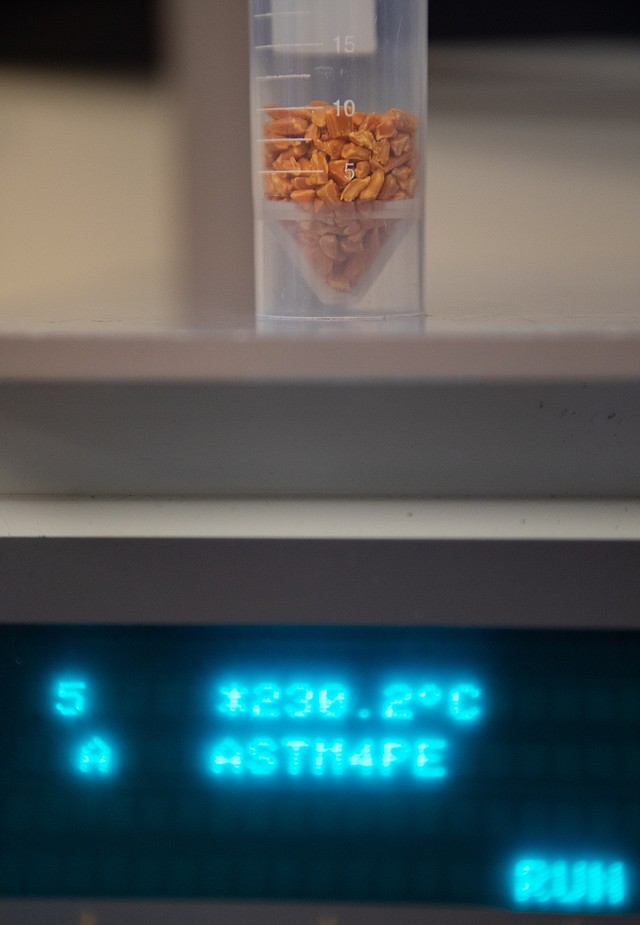 The Dynisco Melt Indexer preheats to 230 degrees Celcius to melt and test the viscosity of recycled ABS plastic. (Hailey Hoffman/Cascadia Daily News)
The Dynisco Melt Indexer preheats to 230 degrees Celcius to melt and test the viscosity of recycled ABS plastic. (Hailey Hoffman/Cascadia Daily News)
Misasi said the goal of this kind of research is to find ways to recycle or upcycle plastics. So far, the program is on par with that goal: Western has sent plastics to both a recycler in Portland and to tech company, HP. Almost none of its materials have gone to the landfill.
Since its start, 35% of all polymer materials engineering students have participated in the ocean plastics project. Each year’s application period yields essays from students expressing their desire to help solve the plastic waste problem, Misasi said. Through the project, those aspirations transform into action.
“This project’s really brought us to focus on sustainability and recycling issues,” Misasi said. “Although all the faculty had interest in that before, this project has really just brought it to the forefront.”
While the ocean plastics project offers an avenue for diverting plastic waste, it also presents students with opportunities for real-world experience in the field.
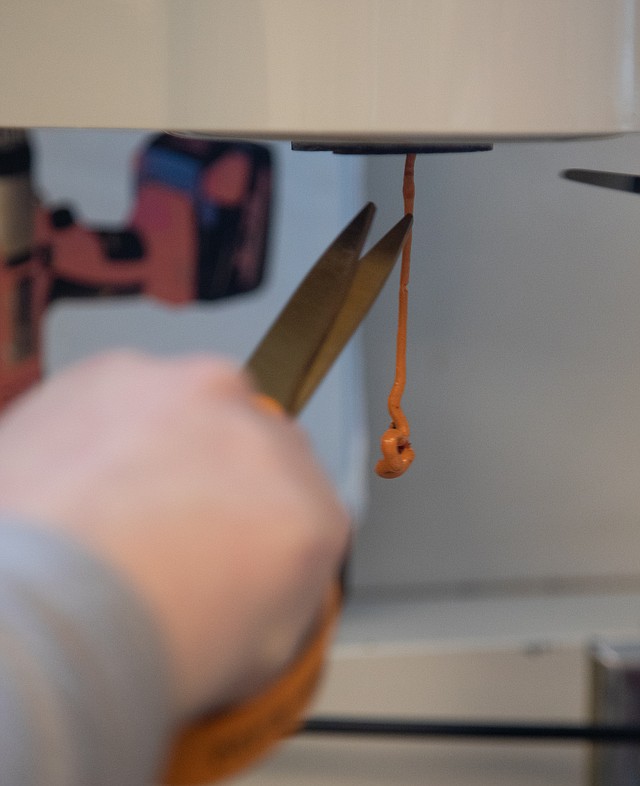 Taylor Hollcraft snips the melted recycled ABS plastic while testing in the lab. (Hailey Hoffman/Cascadia Daily News)
Taylor Hollcraft snips the melted recycled ABS plastic while testing in the lab. (Hailey Hoffman/Cascadia Daily News)
In March, students Jayme Perman and Taylor Hollcraft traveled with Misasi to Washington, D.C., to present at the National Plastics Recycling Conference with Scott Farling of the Ocean Plastics Recovery Project. Drury has also gained professional experience at conferences, presenting both a poster and a conference paper in just the past two weeks.
“I think one of the really great things about our program is that we do get so much hands-on experience, which is helpful when looking for a job,” Drury said. “Already knowing how to run the test, make specimens and analyze the data, especially as undergraduate students, is pretty unique.”
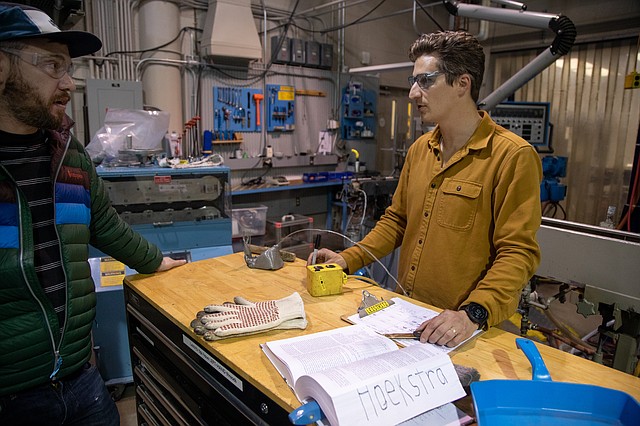 John Misasi is a polymer materials engineering professor at Western Washington University, and works to recycle ocean plastics. (Hailey Hoffman/Cascadia Daily News)
John Misasi is a polymer materials engineering professor at Western Washington University, and works to recycle ocean plastics. (Hailey Hoffman/Cascadia Daily News)
Misasi echoed that sentiment.
“As an engineering student, a lot of times you’re given a problem that has a small scope, and if it’s a class project, a lot of times the professor knows how to solve the problem or is asking questions they know the answers to,” Misasi said. “But with research, we’re in the same boat — we don’t know the answers, so it’s a very open-ended problem to solve. And that’s what real-life engineering or being a scientist or an engineer is.”

